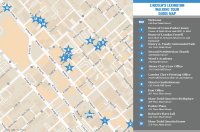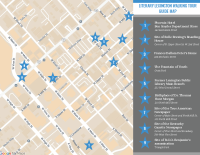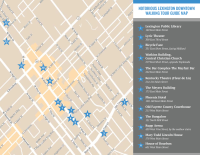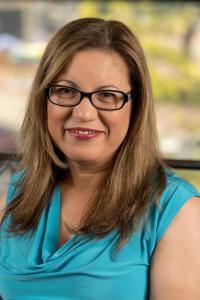
Website Search
Learn how to access LPL on your mobile device - no app required! Manage your account, search our catalog, place holds, etc. Add an icon to your home screen.
The William Stamps Farish Fund Theater is a state-of-the-art facility in one of Main Street’s busiest places.
Fully renovated and updated, the theater on the Central Library’s first floor is home to theater, dance, live music, film, community events, and meetings. The Lexington Public Library makes the facility available at some of the city’s best prices, with affordable business, nonprofit, and government rates.
All databases are available from this page.
When you log into many of our services, you'll be asked to provide a PIN (Personal Identification Number) in addition to your library card number. Your default PIN is typically the last 4 digits of the phone number on file for your account.
Join us for a walking tour highlighting Lexington's unique role in Abraham Lincoln's life.
Tour Length: 1.42 miles
This tour is adapted from the 2009 Tour created in celebration of the 200th anniversary of Lincoln's birth by a partnership between the Lexington Public Library, the Isaac Scott Hathaway Museum, and the Mary Todd Lincoln House.
The music clips used in this tour are from “Walking Barefoot on Grass” by Kai Engel, and are used with a CCBY license. It is available here.

Want to learn or improve your skills in a new language? Ready to switch from the bird of prey with ominous reminders? Try Mango Languages to learn practical conversation skills in over 70 world languages on your computer or mobile device. Learn and practice English with ESL courses taught in more than 15 different languages. You must create an account on the Mango Languages site before you can log into the mobile app.
Languages You Can Learn!
|
|
|
Mango Languages Mobile App
![]() Delivers fast, easy and effective language learning wherever your travels take you. With free apps from Mango, you can access the same awesome courses when you’re on the go.
Delivers fast, easy and effective language learning wherever your travels take you. With free apps from Mango, you can access the same awesome courses when you’re on the go.

Get live expert help with homework and skill building, study tips and tools, and collaborate with friends on your computer or mobile device. Live Homework Help is available for K-12 grades from 2 pm - 11 pm daily with professional tutors. You must create an account on the Brainfuse site before you can log into the mobile app.
Mobile Options (Create Your Account Here First)

|
Brainfuse HelpNow Demo
Brainfuse HelpNow Demo (Español)
The Central Kentucky Cemeteries Maps are powered by Google Maps. Counties include: Fayette, Bourbon, Clark, Garrard, Harrison, Jessamine, Lincoln, Madison, Mercer, Montgomery, Nicholas, Powell, Scott, and Woodford.

Do you need to learn new software, technology, creative or business skills to achieve your professional or personal goals? LinkedIn Learning gives you unlimited access to a vast library of high quality video tutorials taught by recognized industry experts. You can work at your own pace with provided exercise files. Available on your personal computer or mobile device. (Note: To log into the mobile app, enter lex for your Library ID. You will be prompted to enter your library card number and PIN.)
Join us for a walking tour of Lexington’s literary history!
Tour Length 1.05 miles
The music clips used in this tour are from “Walking Barefoot on Grass” by Kai Engel, and are used with a CCBY license. It is available here.
Join us for a walking tour of downtown Lexington's most notorious places! The full tour is available as a single MP3, or you can download individual tracks. For the single MP3, music will play between the stops. You can pause the track while you walk between stops.
Please Note: Some Listener's Discretion is advised.
This tour covers a walking distance of 1.43 miles.
The music clips used in this tour are from “Walking Barefoot on Grass” by Kai Engel, and are used with a CCBY license. It is available here.
Read articles from magazines and journals, learn a new language, or locate a newspaper article. These resources can't be found with a search engine but are available for free with your library card.
The Undesign the Redline project unearths the deep and systemic history of structural racism and inequality in the United States. This interactive exhibit explores policies like Redlining, their implications for today, and what we can do to undesign them.
The exhibit was created by social impact design studio designing the WE and has been invited to dozens of cities across the country. A local advisory group has helped to produce local history and stories about Redlining in Lexington.
Learning doesn’t stop at the end of the school day. The Lexington Public Library is here to support your education at every level, from birth through college, with skill-building tools, live tutoring, standardized test prep, after-school programs, and more.
Starting your own business or nonprofit is hard work, but we can help you locate the tools you need to get your ideas off the ground.
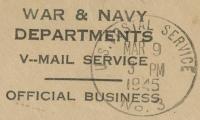

Read the latest issues of your favorite magazines on your computer or mobile device.

Discover favorite books and apps, matched to your child's age and interests, and other tools for building early literacy. Log reading and earn badges on your computer or mobile device.
Whether you're just starting out, changing careers, or returning to the workforce, finding a job can be tough. We can help you land the right position and answer your questions along the way.

Need an article from an academic journal? Search EBSCO for articles covering a wide range of the arts, the humanities, and the sciences. Available on your computer or mobile device. Provided by the Kentucky Virtual Library.
Dr. Rania Belmadani was born in Algeria, lived in Spain for more than 15 years, and now calls Lexington her home. She serves as a Language Access Specialist with GlobalLex. Rania is fluent in five languages – Arabic, French, Spanish, German and English. In addition, she holds multiple degrees from universities in both Algeria and Spain.
Meet with a librarian for one-on-one consultation. Please submit the Book a Librarian Appointment Request Form or call 859-231-5500 during business hours to schedule an appointment. Appointments are scheduled Monday-Friday during Library business hours and typically last 30 to 45 minutes.

